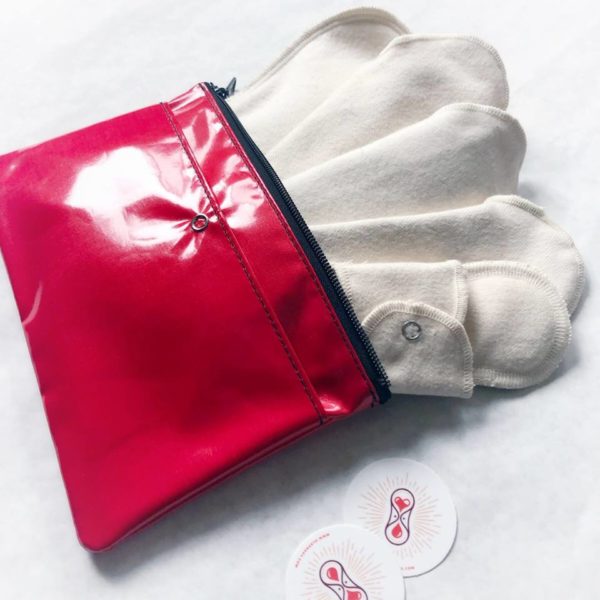Last week I read (and shared on our facebook page) this article from RealFarmacy.com and it got me thinking about how the alternatives to pads and tampons are not readily known… So many choices!
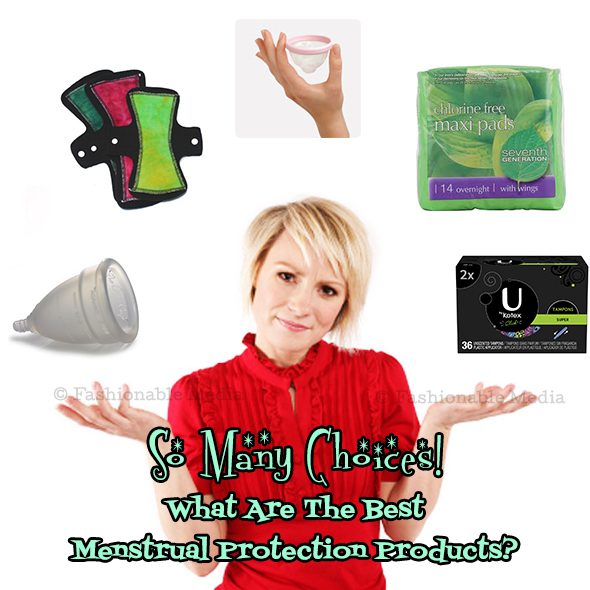
I personally was unable to find a comprehensive or complete list of the best menstrual protection products available, so I compiled a list of these effective feminine hygiene products and where you can buy them.
Below is a list of…
- What you can use besides expensive tampons and pads
- How much money you could be saving by using reusable products
- How much healthier the alternatives are for you (and the environment)
- Details about each product to help you pick what’s best for you!
Ready? Let’s dive in!

First off, you probably already know what’s wrong with tampons, but just in case you don’t have any clue, let’s go over a few facts that will surprise you:
- They significantly increase the risk of getting Toxic Shock Syndrome which can kill you.
- They are expensive!
- You need to change them at least 4x a day (in order to reduce the risk of TSS)
- Tampons are bleached with chlorine and contain Dioxin, a known carcinogen which has been linked to cancer and endometriosis.
- They absorb more than just blood which can cause vaginal dryness, ulcerating of the vagina and cervix.
- They can cause UTI’s, yeast infections, pain during sexual intercourse and more.
- Disposing of them in landfills is a hazard to the environment for a plethora of reasons.
If you aren’t convinced and you really can’t bear the thought of *not* using tampons, don’t worry, there are alternatives to the standard commercial tampons.
Sea Sponge Tampons
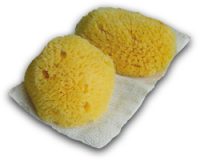
Sea Sponge Tampons are just that – seas sponges. Natural, reusable for up to a year and they do not contain Dioxin or synthetic fibers. They are easy to use, economical, and earth friendly too. From my research it appears that Jade & Pearl Sea Pearls Sea Sponge Tampons are a popular choice although regardless of which seas sponge tampons you decide to purchase, I recommend reading the reviews for the Jade & Pearl ones on Amazon before you decide if they are right for you!!!
Personally, I would not purchase just any seas sponges and start using them as a tampon. Secondly, I would be sure to boil and sterilize them before and after each period. Lastly, from my research I would not recommend them over menstrual cups however, they are considerably safer and more natural than commercial tampons.
Options:
Jade & Pearl – 2 for $14
Jam Sponge – 2 for £9.00
If you are looking for a safer alternative to commercial tampons and don’t think that a seas sponge is right for you, follow these guidelines when looking for tampons to purchase.
Look for tampons that…
- are sterilized and whitened by hydrogen peroxide, rather than chlorine.
- are made from cotton as apposed to rayon or other synthetic fibers.
- do not have applicators – cardboard or plastic.
Organic Chlorine-Free Tampons
The U.S. FDA suggests the following guidelines for decreasing the risk of contracting TSS when using tampons:
- Follow package directions for insertion
- Choose the lowest absorbency needed for one’s flow
- Consider using cotton or cloth tampons rather than rayon
- Change the tampon at least every 4 to 6 hours
- Alternate between tampons and pads
- Avoid tampon usage overnight or when sleeping
- Increase awareness of the warning signs of toxic shock syndrome and other tampon-associated health risks
Source: wikipedia.org on Toxic shock syndrome
According to you can save a lot of money using reusable menstrual products… DUH! But in case you aren’t convinced, here is some info to consider:
Let’s say a box of disposables costs about $5.00 per month (if you use all organic cotton, it’s more expensive). That’s $60.00 a year, or approximately $2,100.00 during your menstrual years, not taking into account inflation.
A reusable menstrual pad can last several years, and a menstrual cup up to 10 years. Particularly with pads, you will likely want to have several – just as you do with kitchen or bath towels, so that you can rotate and distribute usage.
Menstrual pads are approximately $8 to $12 each. And, menstrual cups are approximately $25 to $35. You can easily save many hundreds of dollars by using reusables for part or all of your monthly cycle.
So you are probably thinking, “Sign me up!” right? Well you might be wondering things like…
What kinds of menstrual cups are available? What’s the best menstrual cup available? How do you use reusable menstrual pads? Are reusable menstrual pads a sanitary and viable option?!

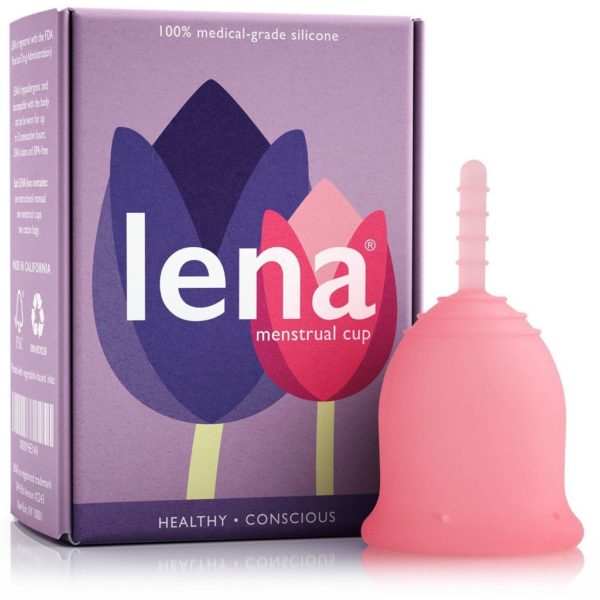
A menstrual cup is… well, it’s a cup! Normally they are made of silicone, latex or rubber, and they sit inside your vagina to collect the blood that a tampon would normally absorb. Most menstrual cups come in two sizes, one for pre-childbirth and one for post-childbirth (since normally your cervix is permanently larger after you give birth.) Menstrual cups can usually be worn for up to 12 hours without needing to be emptied or removed, depending on your personal flow on any given day. When you think it may be full or notice a leak, just remove the cup, pour it out, rinse and reinsert. Wash it once a day with a mild soap or a special cup wash like DivaCup DivaWash® Natural DivaCup Cleaner.
Diva Cup
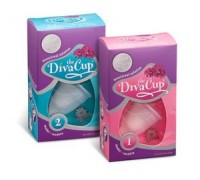
The DivaCup is a reusable, bell-shaped menstrual cup that is worn internally and sits low in the vaginal canal, collecting rather than absorbing your menstrual flow. I personally prefer and recommend the DivaCup as it offers 12 hour leak-free protection and is made from the highest quality healthcare grade silicone to assure comfort and durability. The DivaCup does not contain any of the following: latex, plastic, PVC, acrylic, acrylate, BPA, phthalate, elastomer, polyethylene, and free of colors and dyes. Best of all, it is reusable and eco-friendly – no waste, no chemicals. I also appreciate the extra grip ridges on the bottom for easier removal. Learn more at www.divacup.com
Purchase:
Diva Cup Model 1 Pre-Childbirth – $26.50
DivaCup Model 2 Post-Childbirth – $26.75
SoftCup
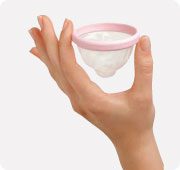
Reusable Softcup is a durable, flexible, reusable cup that can be worn for up to 12 hours and reused throughout one menstrual cycle and this disposed. Reusable Softcup has all the benefits of the disposable Softcup but with the added advantage of only having to use just one cup per period instead of a new one each day. Learn more about reusable Softcup. One of the advantages of SoftCup is being able to try a sample pack for $2.50 to see if it’s something you like. The disadvantage is that they are $6.19 for a box of two reusable SoftCups. This means you will need 6 boxes a year which will end up being around $38 plus tax, making it a more expensive option that DivaCup and you are creating more waste.
Purchase:
Reusables at Drugstore.com or Amazon.com
for $6.19 (2ct)
Disposables at Amazon.com for $5.48 (12ct)
Other Menstrual Cups To Consider:
Most brands offer cups in two sizes – one of pre-childbirth and one for post-childbirth. Obviously, the pre-childbirth ones are smaller. Purchase accordingly!
Lunette Menstrual Cup Purple Cynthia – Model 1 – $39.99
Lunette Menstrual Cup Purple Cynthia – Model 2 – $39.99
Moon Cup, Size A, 1 Cup – $35.39
Moon Cup, Size B, 1 Cup – $24.53

Learn more about the different kinds of menstrual pads available here. You can search for a variety of different brands and styles of Reusable Menstrual Pads on Amazon.com.
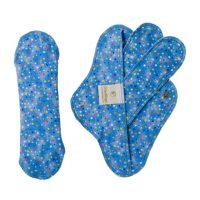
GladRags holders are made out of comfortable cotton flannel fitted with a cute snap and “envelope” for the inserts. GladRags inserts consist of super-absorbent terry cloth and flannel for maximum protection. Each GladRags Day Pads have a unique three part design which allows you to customize the absorbency of the pad according to your flow by choosing one or two inserts. You can even use the holder alone for an ultra-slim liner! This breathable all-cotton pad is so comfortable, you’ll wonder how you ever lived without it. GladRags are made to last for years, so you’ll save a lot of money and help the environment. And if you are already washing cloth diapers for your baby, it’s even more convenient!
Purchase:
Gladrags.com – $14.99 (1 holder and 2 inserts)
Organic Cotton Disposable Maxi Pads
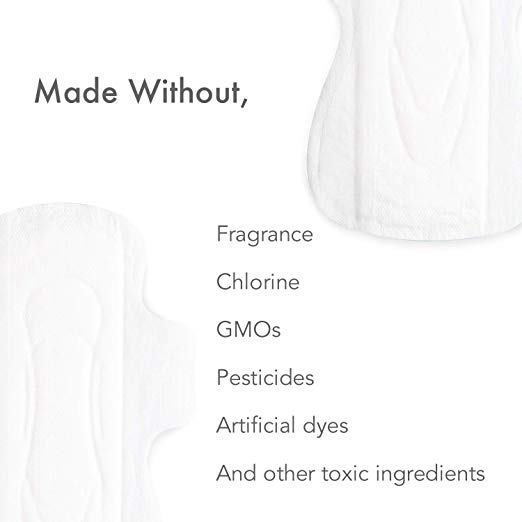
If you just can’t stand the thought of using reusable pads, at least consider organic cotton disposable pads. Commercial maxi pads that are available to the mass market generally are made from materials that are filled with chemicals and treated with chlorine. Why would you want chemicals near your most sensitive body parts? Eeeew!
Opt for organic cotton pads whenever possible. Your vajayjay with thank you later!!!
Let us know if you have any other suggestions!

